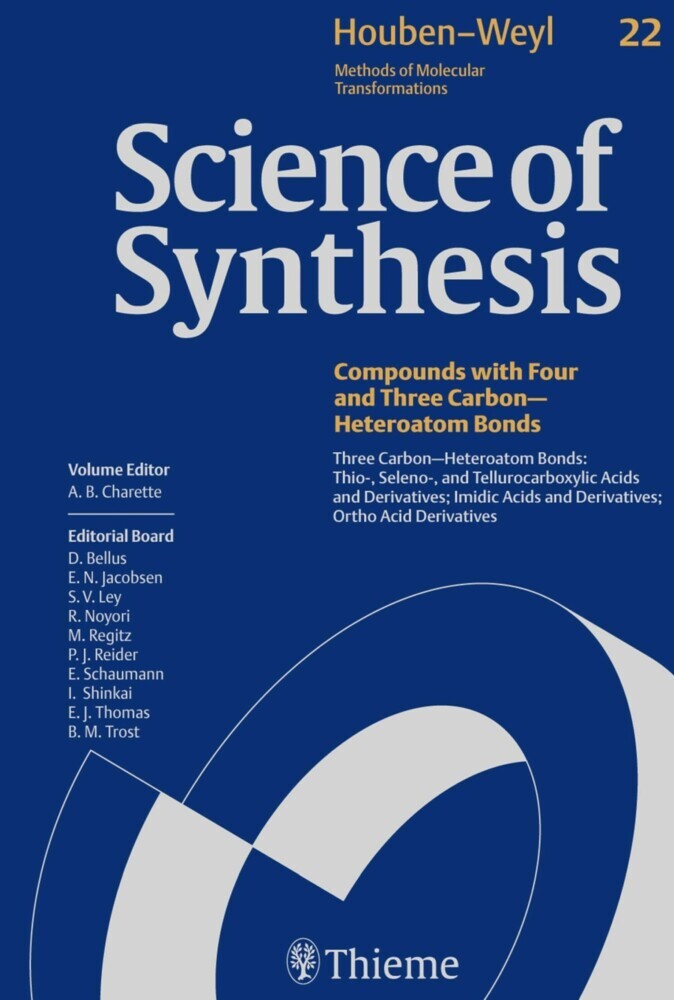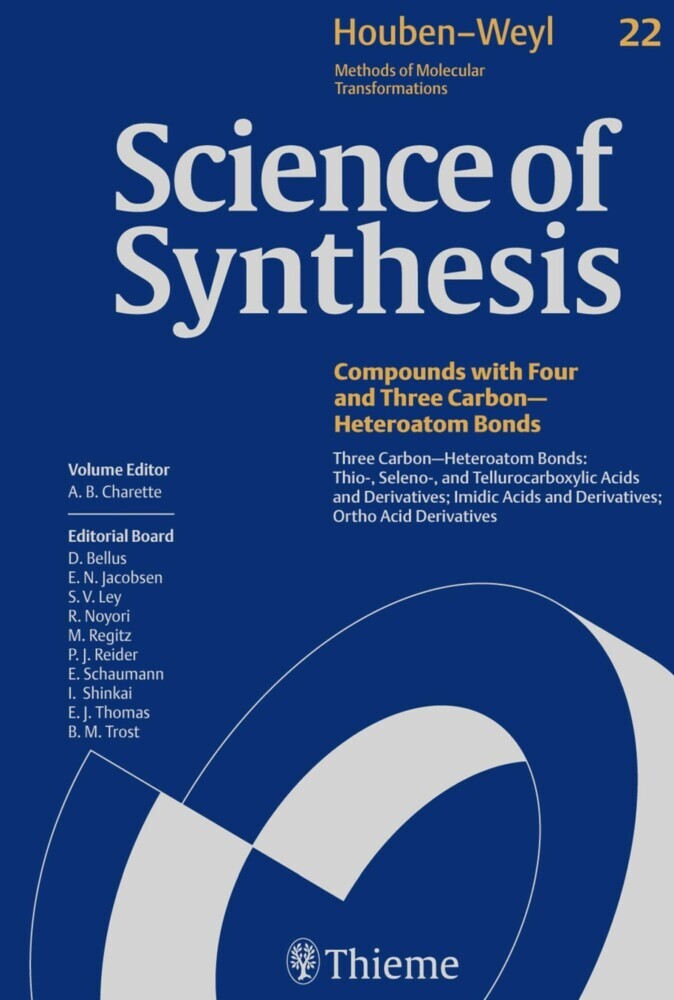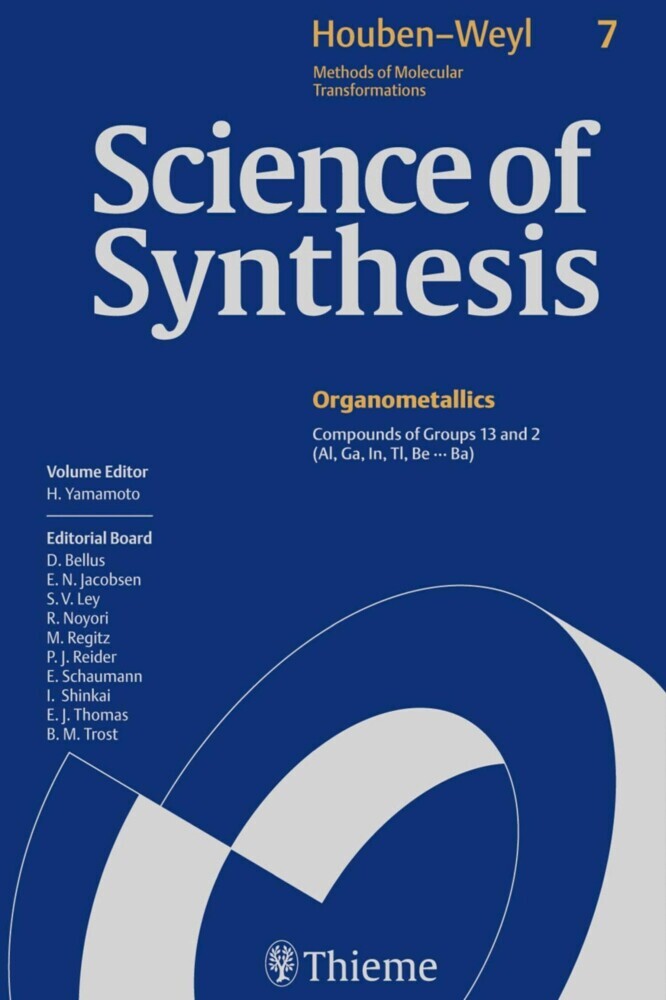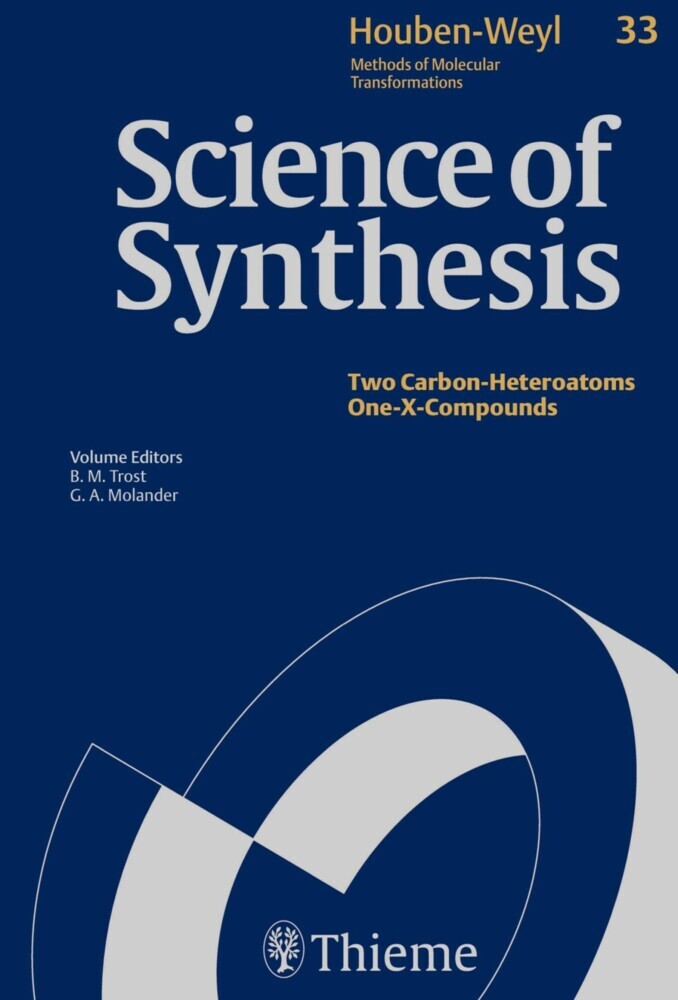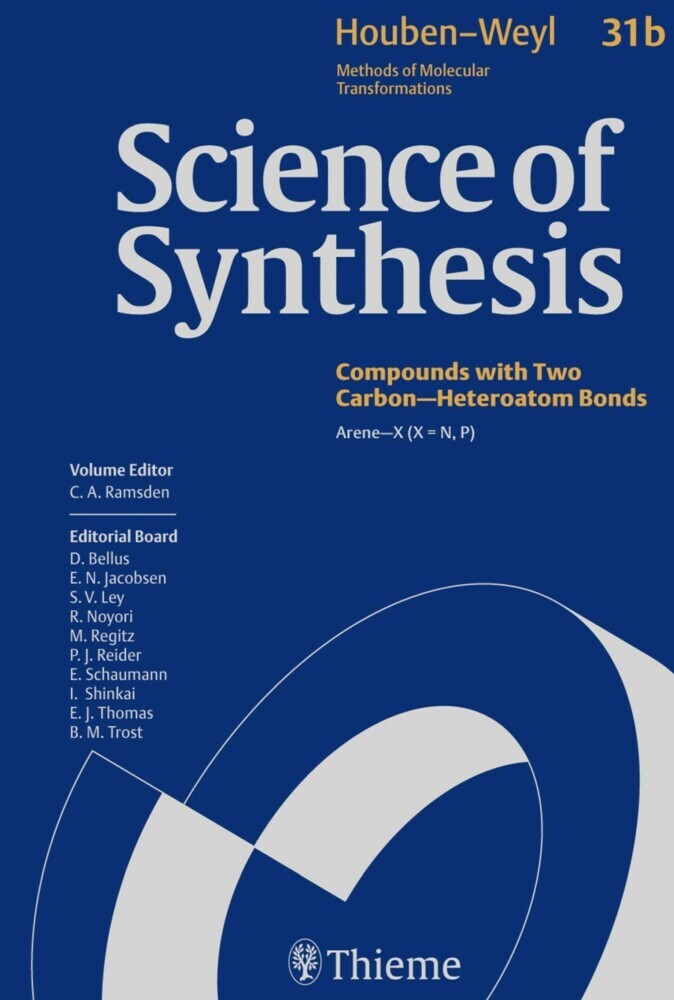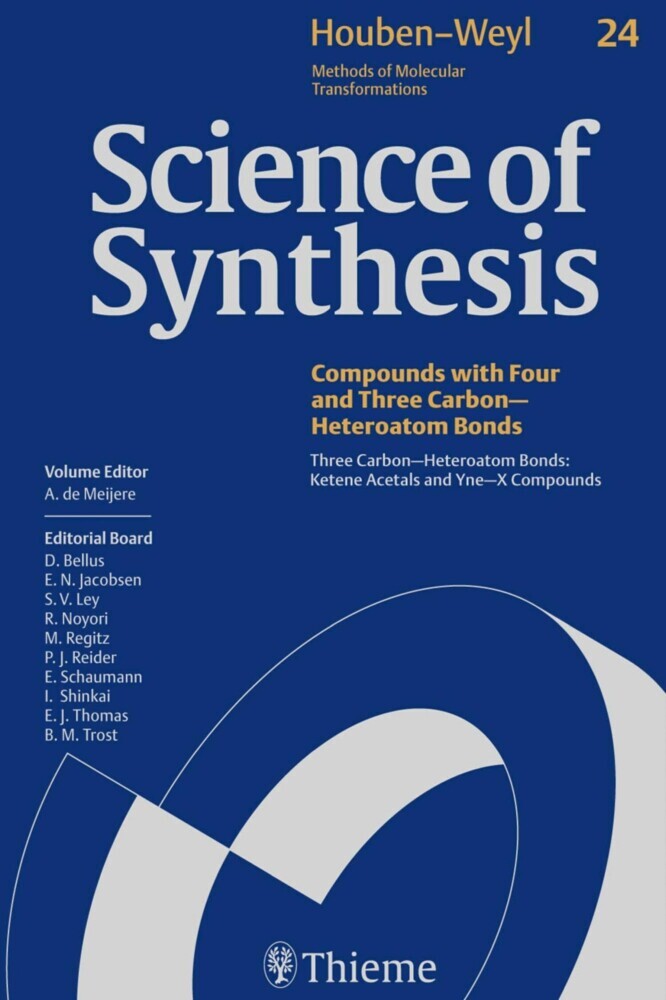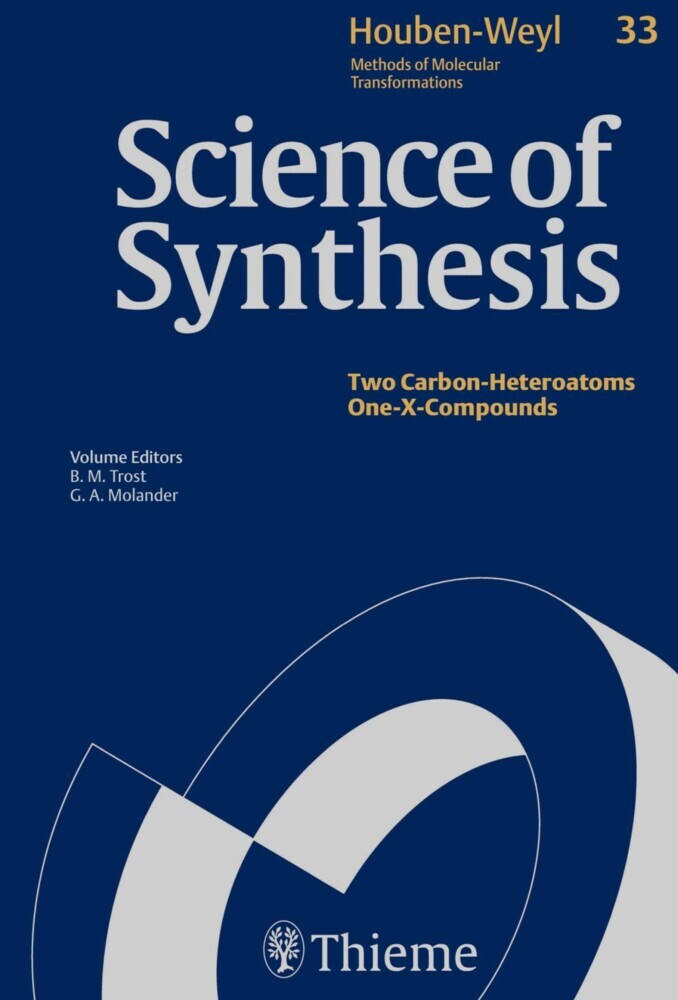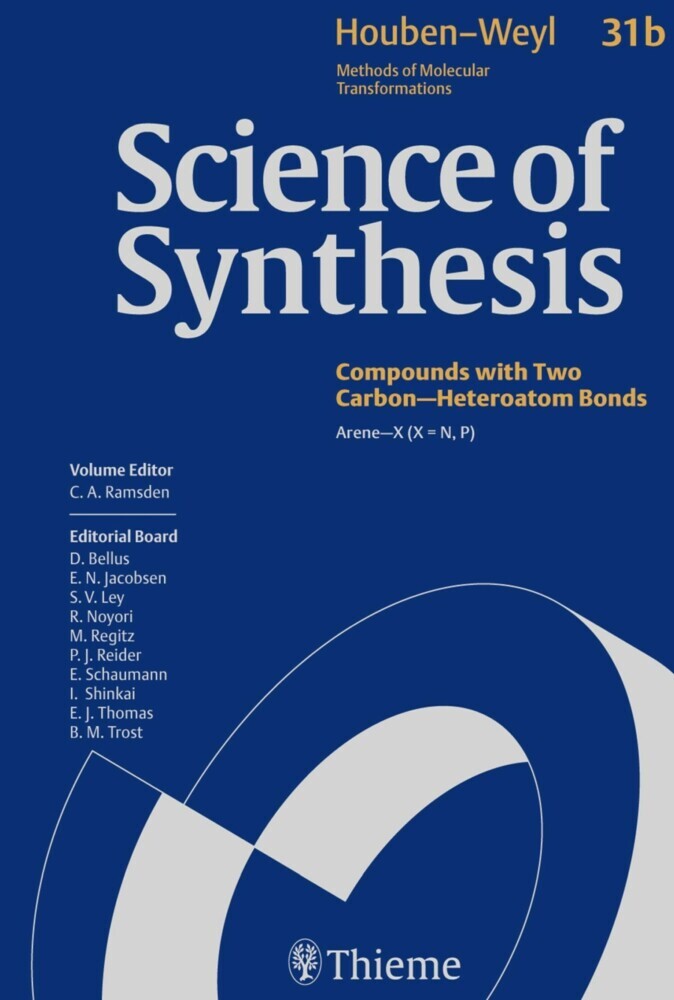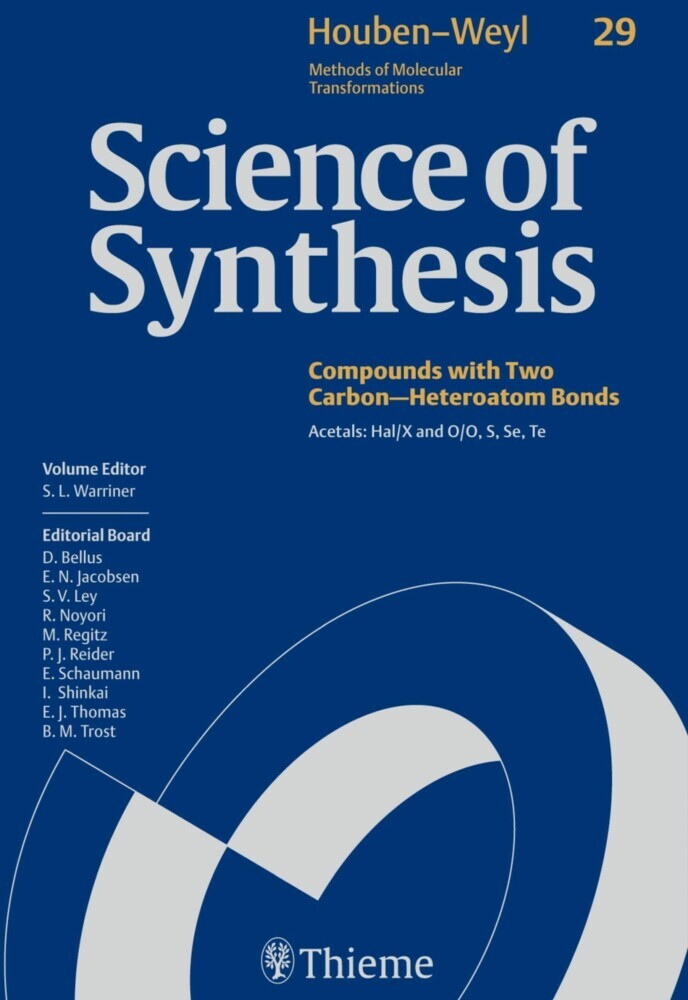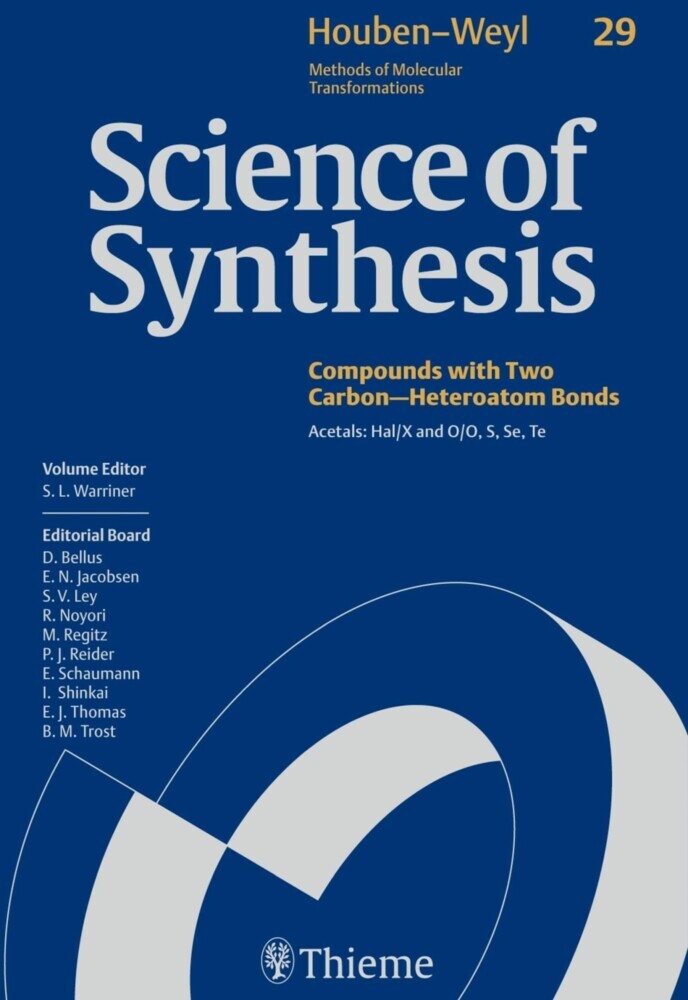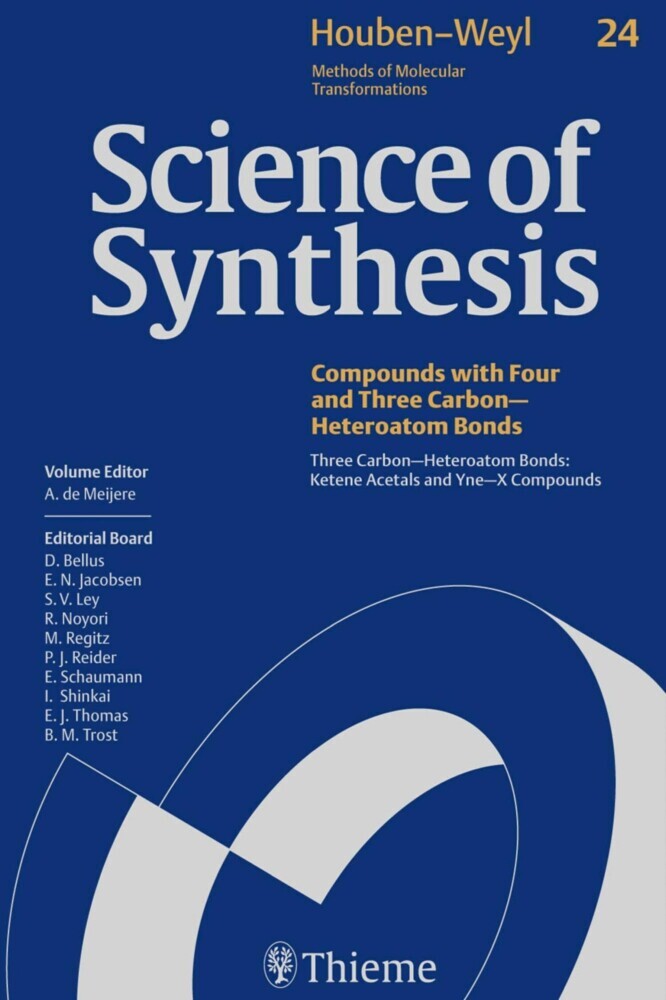Science of Synthesis: Houben-Weyl Methods of Molecular Transformations Vol. 22. Vol.22
Three Carbon-Heteroatom Bonds: Thio-, Seleno-, and Tellurocarboxylic Acids and Derivatives; Imidic Acids and Derivatives; Ortho Acid Derivatives
Science of Synthesis: Houben-Weyl Methods of Molecular Transformations Vol. 22. Vol.22
Three Carbon-Heteroatom Bonds: Thio-, Seleno-, and Tellurocarboxylic Acids and Derivatives; Imidic Acids and Derivatives; Ortho Acid Derivatives
Science of Synthesis: Houben-Weyl Methods of Molecular Transformations is the entirely new edition of the acclaimed reference series Houben-Weyl, the standard synthetic chemistry resource since 1909. This new edition is published in English and will comprise 48 volumes published between the years 2000 and 2008.
Science of Synthesis is a quality reference work developed by a highly esteemed editorial board to provide a comprehensive and critical selection of reliable organic and organometallic synthetic methods. This unique resource is designed to be the first point of reference when searching for a synthesis strategy.
- Contains the expertise of presently 400 leading chemists worldwide
- Critically evaluates the preparative applicability and significance of the synthetic methods
- Discusses relevant background information and provides detailed experimental procedures
For full information on the Science of Synthesis series, visit the Science of Synthesis Homepage
1;Science of Synthesis - Volume 22: Three Carbon--Heteroatom Bonds: Thio-, Seleno-, and Tellurocarboxylic Acids and Derivatives; Imidic Acids and Derivatives; Ortho Acid Derivatives;1 1.1;Title page;3 1.2;Imprint;5 1.3;Preface;6 1.4;Overview;8 1.5;Table of Contents;10 1.6;22 Introduction;40 1.6.1;22.1 Product Class 1: Thiocarboxylic Acids and Derivatives;50 1.6.1.1;22.1.1 Product Subclass 1: a-Substituted Sulfur Ylides;50 1.6.1.1.1;22.1.1.1 Synthesis of Product Subclass 1;52 1.6.1.1.1.1;22.1.1.1.1 Silicon-, Tin-, and Germanium-Substituted Sulfur Ylides;52 1.6.1.1.1.1.1;22.1.1.1.1.1 Method 1: Deprotonation of Sulfonium and Sulfoxonium Salts;53 1.6.1.1.1.1.2;22.1.1.1.1.2 Method 2: Hydrogen Atom Substitution of Lesser Functionalized Sulfur Ylides;54 1.6.1.1.1.1.2.1;22.1.1.1.1.2.1 Variation 1: Hydrogen Atom Substitution Using Chloro(methyl)silanes, -germanes, and -stannanes;54 1.6.1.1.1.1.3;22.1.1.1.1.3 Method 3: Synthesis from Carbenes;55 1.6.1.1.1.1.3.1;22.1.1.1.1.3.1 Variation 1: Transition-Metal-Catalyzed Decomposition of Diazo Compounds;56 1.6.1.1.1.1.4;22.1.1.1.1.4 Method 4: 1,3-Elimination Reactions;57 1.6.1.1.1.1.4.1;22.1.1.1.1.4.1 Variation 1: Thermolysis of [Bromo(trimethylsilyl)methyl] [(Trimethylsilyl)methyl] Sulfides;57 1.6.1.1.1.1.5;22.1.1.1.1.5 Method 5: Modification of Existing Ylides;57 1.6.1.1.1.2;22.1.1.1.2 Halogen-Substituted Sulfur Ylides;58 1.6.1.1.1.2.1;22.1.1.1.2.1 Method 1: Deprotonation of Sulfonium and Sulfoxonium Salts;58 1.6.1.1.1.2.2;22.1.1.1.2.2 Method 2: Hydrogen Atom Substitution of Lesser Functionalized Sulfur Ylides;60 1.6.1.1.1.2.2.1;22.1.1.1.2.2.1 Variation 1: Replacement with a Halogen Atom;60 1.6.1.1.1.2.2.2;22.1.1.1.2.2.2 Variation 2: Replacement with Other Functional Groups;61 1.6.1.1.1.2.3;22.1.1.1.2.3 Method 3: Synthesis from Carbenes;61 1.6.1.1.1.2.3.1;22.1.1.1.2.3.1 Variation 1: By Reaction with Dihalocarbenes;61 1.6.1.1.1.2.3.2;22.1.1.1.2.3.2 Variation 2: From Monohalocarbenes;64 1.6.1.1.1.3;22.1.1.1.3 Oxygen-Substituted Sulfur Ylides;64 1.6.1.1.1.4;22.1.1.1.4 Sulfur-Substituted Sulfur Ylides;65 1.6.1.1.1.4.1;22.1.1.1.4.1 Method 1: Deprotonation of Sulfonium and Sulfoxonium Salts;66 1.6.1.1.1.4.2;22.1.1.1.4.2 Method 2: Hydrogen Atom Substitution of Lesser Functionalized Sulfur Ylides;68 1.6.1.1.1.4.2.1;22.1.1.1.4.2.1 Variation 1: With Sulfur-Based Electrophiles;68 1.6.1.1.1.4.2.2;22.1.1.1.4.2.2 Variation 2: With Carbon-Based Electrophiles;70 1.6.1.1.1.4.3;22.1.1.1.4.3 Method 3: Synthesis from Carbenes;70 1.6.1.1.1.4.3.1;22.1.1.1.4.3.1 Variation 1: Photolytic Decomposition of Diazo Compounds;70 1.6.1.1.1.4.3.2;22.1.1.1.4.3.2 Variation 2: Thermolysis of Diazo Compounds;71 1.6.1.1.1.4.3.3;22.1.1.1.4.3.3 Variation 3: Metal-Catalyzed Decomposition of Diazo Compounds;71 1.6.1.1.1.4.3.4;22.1.1.1.4.3.4 Variation 4: By Transylidation;71 1.6.1.1.1.4.3.5;22.1.1.1.4.3.5 Variation 5: From Other Carbene Sources;74 1.6.1.1.1.4.4;22.1.1.1.4.4 Method 4: Reaction of C--H Acidic Compounds with Sulfonium Salts Bearing a Leaving Group;74 1.6.1.1.1.4.5;22.1.1.1.4.5 Method 5: Addition of Sulfoxides to 1-[(Trifluoromethyl)sulfonyl]alkynes;76 1.6.1.1.1.4.6;22.1.1.1.4.6 Method 6: Hydrolysis of Tetrathiafulvenium Salts;76 1.6.1.1.1.5;22.1.1.1.5 Selenium-Substituted Sulfur Ylides;77 1.6.1.1.1.5.1;22.1.1.1.5.1 Method 1: Reaction of "Onium" Salts with Activated Sulfoxides or Selenoxides;77 1.6.1.1.1.5.1.1;22.1.1.1.5.1.1 Variation 1: From Sulfoxides;77 1.6.1.1.1.5.1.2;22.1.1.1.5.1.2 Variation 2: From Selenoxides;78 1.6.1.1.1.6;22.1.1.1.6 Nitrogen-Substituted Sulfur Ylides;78 1.6.1.1.1.6.1;22.1.1.1.6.1 Method 1: Deprotonation of Sulfonium and Sulfoxonium Salts;79 1.6.1.1.1.6.2;22.1.1.1.6.2 Method 2: Hydrogen Atom Substitution of Lesser Functionalized Sulfur Ylides;79 1.6.1.1.1.6.3;22.1.1.1.6.3 Method 3: Reaction of Sulfides with Dibromo(nitro)acetonitrile;80 1.6.1.1.1.6.4;22.1.1.1.6.4 Method 4: Synthesis from Carbenes;80 1.6.1.1.1.6.4.1;22.1.1.1.6.4.1 Variation 1: By Tran
Aggarwal, Varinder K.
Charette, Andre B.
| ISBN | 9783131719614 |
|---|---|
| Artikelnummer | 9783131719614 |
| Medientyp | E-Book - PDF |
| Copyrightjahr | 2014 |
| Verlag | Georg Thieme Verlag KG |
| Umfang | 989 Seiten |
| Sprache | Englisch |
| Kopierschutz | Digitales Wasserzeichen |

